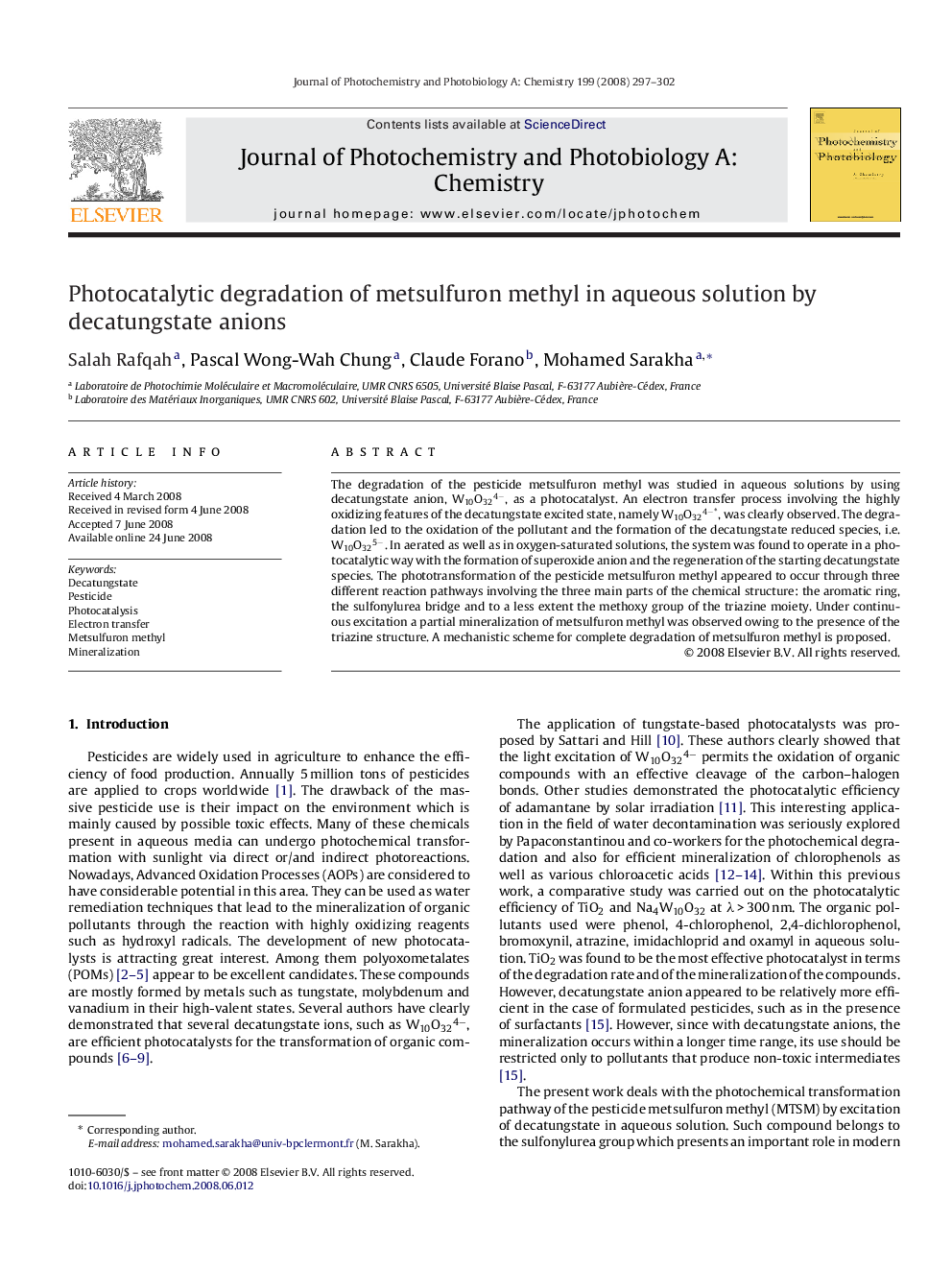| Article ID | Journal | Published Year | Pages | File Type |
|---|---|---|---|---|
| 29093 | Journal of Photochemistry and Photobiology A: Chemistry | 2008 | 6 Pages |
The degradation of the pesticide metsulfuron methyl was studied in aqueous solutions by using decatungstate anion, W10O324−, as a photocatalyst. An electron transfer process involving the highly oxidizing features of the decatungstate excited state, namely W10O324−*, was clearly observed. The degradation led to the oxidation of the pollutant and the formation of the decatungstate reduced species, i.e. W10O325−. In aerated as well as in oxygen-saturated solutions, the system was found to operate in a photocatalytic way with the formation of superoxide anion and the regeneration of the starting decatungstate species. The phototransformation of the pesticide metsulfuron methyl appeared to occur through three different reaction pathways involving the three main parts of the chemical structure: the aromatic ring, the sulfonylurea bridge and to a less extent the methoxy group of the triazine moiety. Under continuous excitation a partial mineralization of metsulfuron methyl was observed owing to the presence of the triazine structure. A mechanistic scheme for complete degradation of metsulfuron methyl is proposed.
